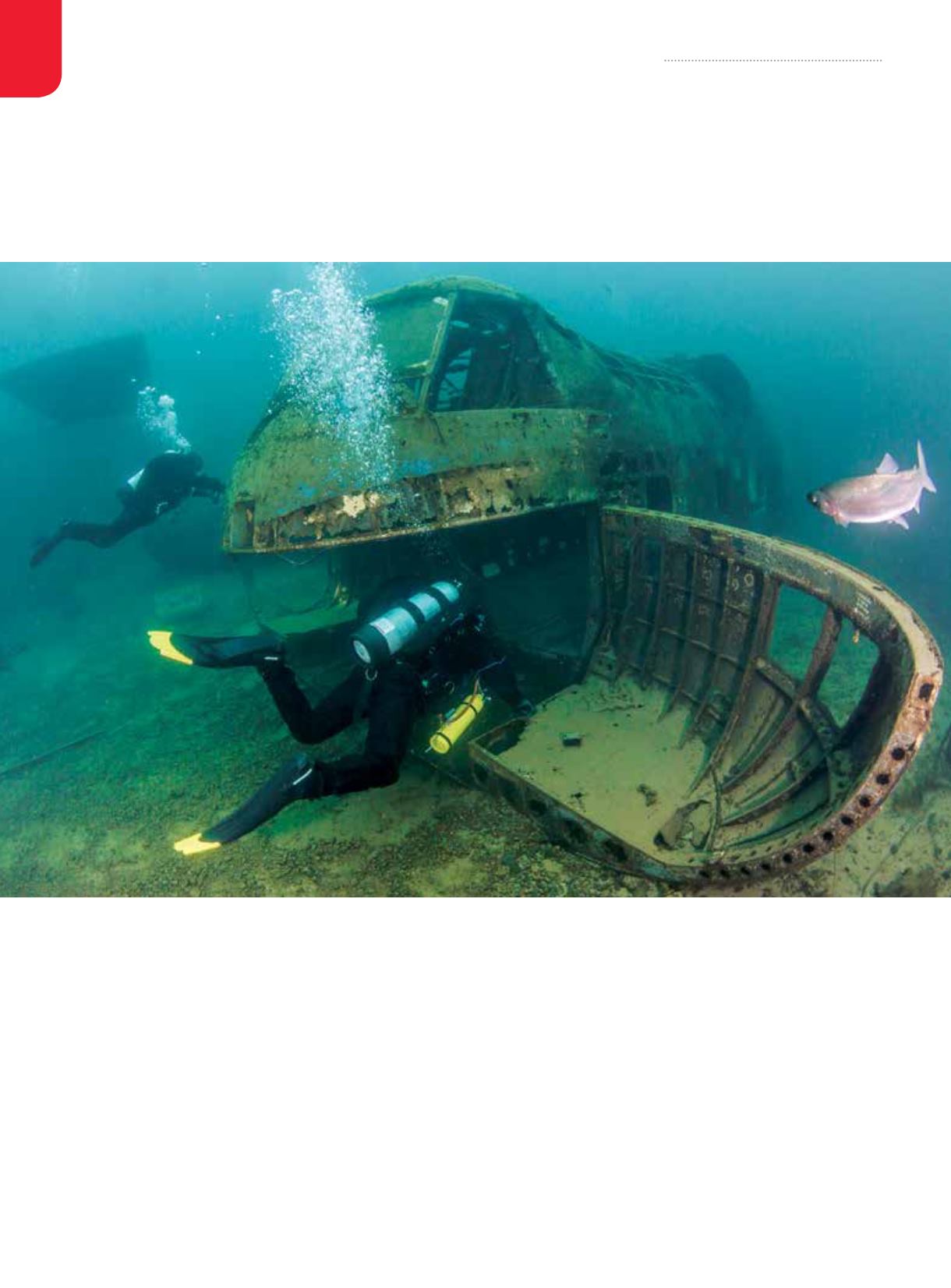

RESEARCH, EDUCATION & MEDICINE
SAFETY 101
56
|
WINTER 2016
W
e were gearing up on a sunny spring day at our local dive quarry. I had
not dived for some months, and I recalled last year’s DAN
Annual
Diving Report
, in which we had written a section about diving fatalities in
quarries, lakes and dive parks. There are more than 150 such sites — also
known as scuba parks — in the U.S. and Canada, most of them near large
population centers.
In our review we looked at the past 10 years and found 47 deaths in dive parks (defined as any
freshwater site that deliberately placed attractions to entice divers) and 63 diving deaths at other
freshwater sites such as rivers and lakes. (We excluded caves because cave diving is highly specialized.)
We compared these two groups to identify safety issues we might warn the diving community about.
Based on a review of the past 10 years
of freshwater dive fatalities in the
U.S. and Canada, DAN recommends
divers be familiar with their gear, pay
attention to their gas supplies and avoid
ascents without any visible reference.
Safe Diving in Fresh Water
Text by Peter Buzzacott, MPH, Ph.D.; photos by Andy Morrison
















